Patta gobhi matar recipe with step by step photos. This is a home-cooked dry curry made with cabbage and green peas. This recipe is vegan as well as gluten-free. It makes for a healthy and delicious meal when paired with chapati or paratha or served as a side dish with dal rice.
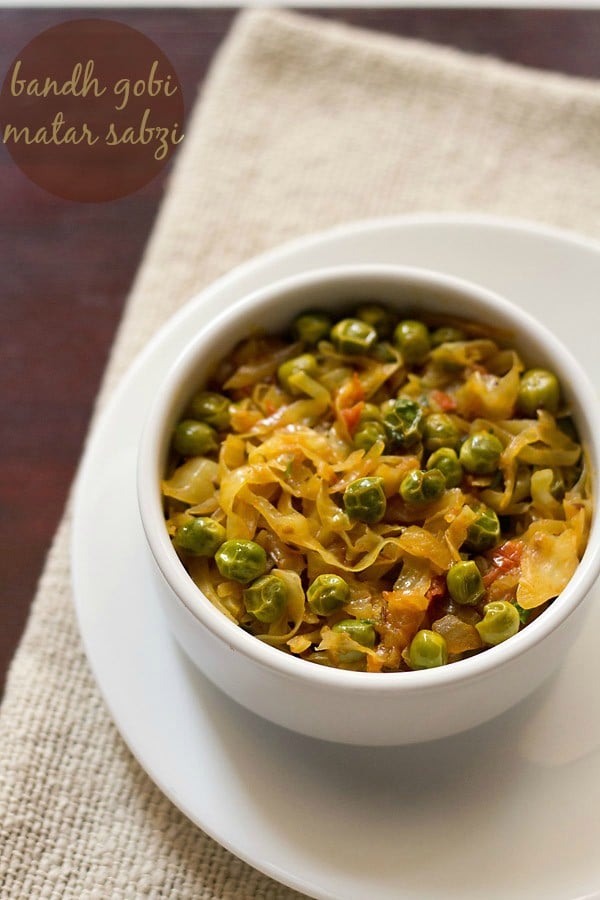
Cabbage is also called as patta gobhi or bandh gobhi in the Hindi language. The green peas are called as matar.
There are some vegetables that match greatly with green peas like cauliflower, potato and carrots. Cabbage is also one of those veggies that pair excellently with green peas.
Like most of my recipes this is also lightly spiced sabzi. Everyday home-cooked Indian food is not heavy on fat (oil, butter, ghee) and spices. They are healthy as well as nutritious too.
Few more similar recipes on the blog are Gobi matar, Cabbage sabji, Cabbage poriyal and Potato cabbage.
This Punjabi recipe of bandh gobi matar goes very well with chapatis or phulkas. I usually make this it with chapatis and sometimes as a side dish with dal-rice. The veggie dish also goes well as tiffin box lunch.
How to make Patta Gobhi Matar
1. Heat 1.5 to 2 tablespoons of oil in a frying pan or kadai without handles (wok). Splutter 1 teaspoon cumin first.
You can use any neutral flavored oil like sunflower oil. You can also use peanut oil.
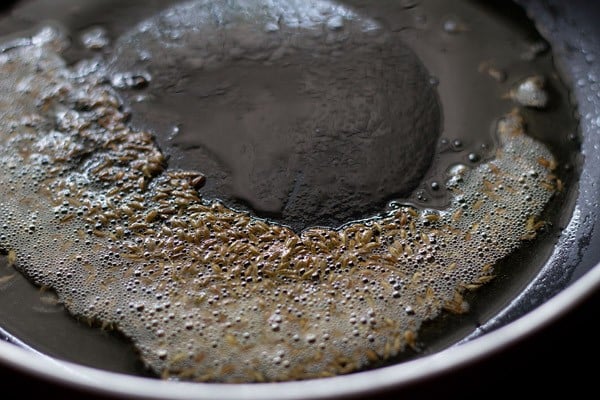
2. Then add ¾ to 1 teaspoon ginger-garlic paste (½ inch ginger and 2 to 3 cloves of garlic, crushed to a paste in a mortar-pestle). Stir and saute for a few seconds or till their raw aroma goes away.
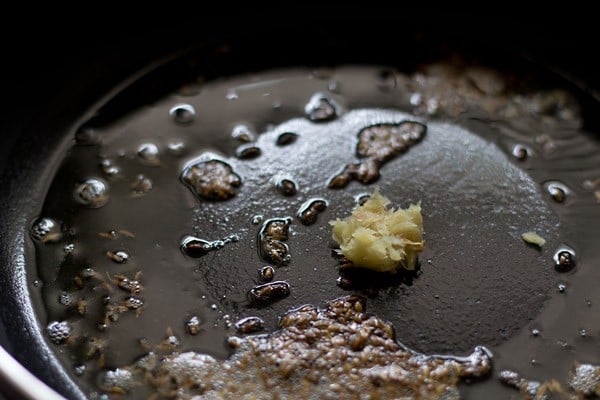
3. Add 1 medium-sized finely chopped onion (½ cup finely chopped onion) and saute the onions stirring often till they become translucent.
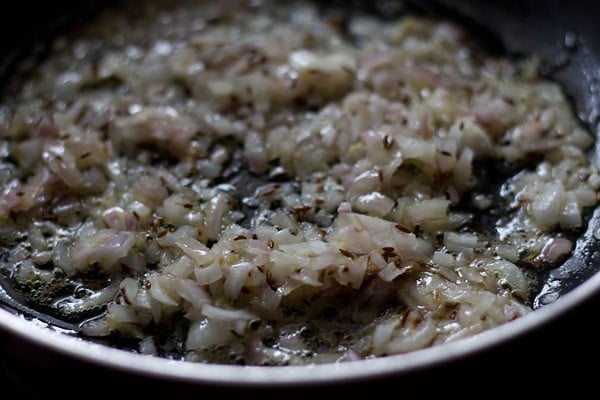
4. Add 1 medium to large-sized chopped tomato (½ cup of finely chopped tomatoes).
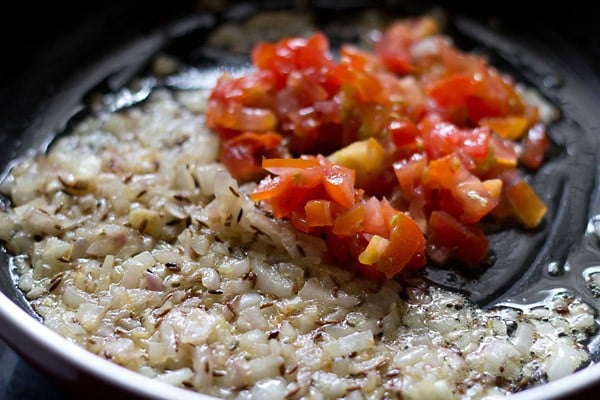
5. Stir and then add ¼ teaspoon turmeric powder, ½ teaspoon red chilli powder and ½ teaspoon coriander powder. Instead of red chilli powder you can add finely chopped green chillies.
This recipe is not spicy. To make a spicy version increase the amount of green chillies or red chili powder or use both as required.

6. Stir and saute till you see oil releasing from the sides of the mixture.
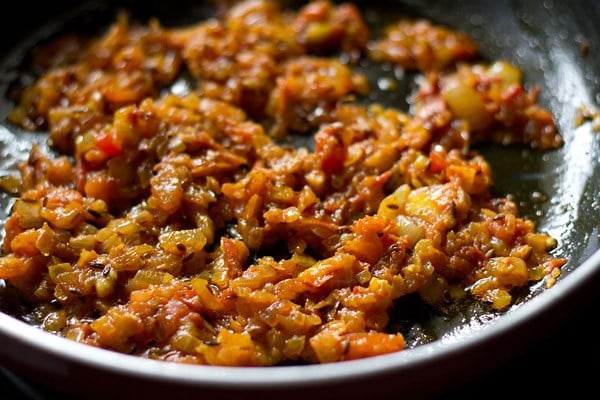
7. Add 200 grams of shredded or chopped cabbage (band gobhi or patta gobhi). Approx 4 cups of shredded cabbage.
If you want then you can blanch the cabbage in hot water for 5 minutes and then add.
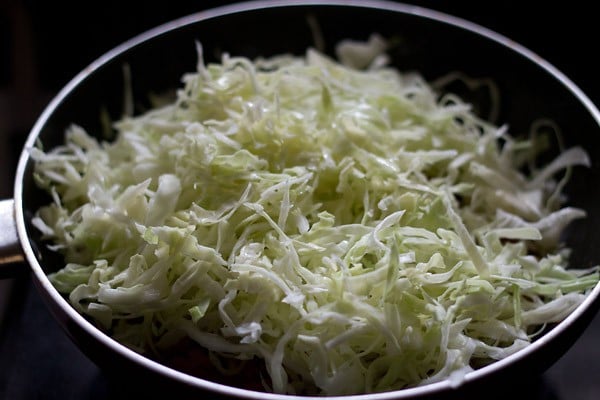
8. Add ¾ to 1 cup of fresh green peas (matar). You can also use frozen peas.
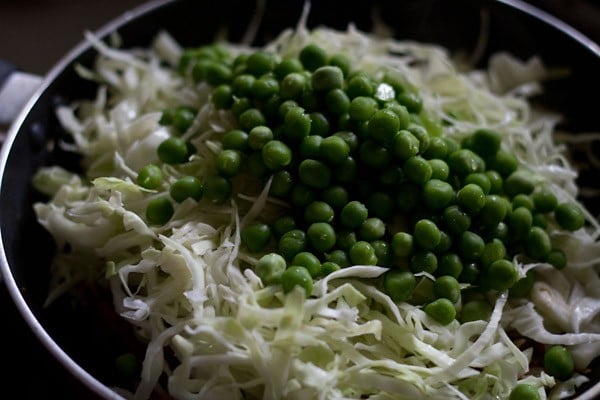
9. Stir very well and season with salt as required.
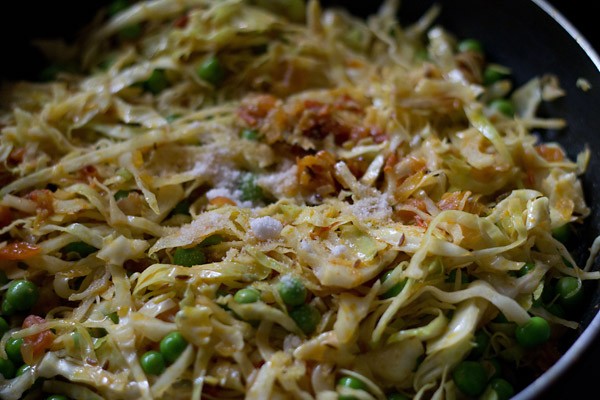
10. Stir again and cover the pan with a rimmed lid filled with water. When using this method of cooking, you don’t need to add water to the veggies. Steam is formed in the pan and the veggies cook in the steam.
If you don’t have a rimmed lid then add about ½ cup of water and cover the pan with its lid. Simmer until the peas are cooked. Keep on checking after some minutes and if the water dries up then add some more water and simmer the sabzi until done.
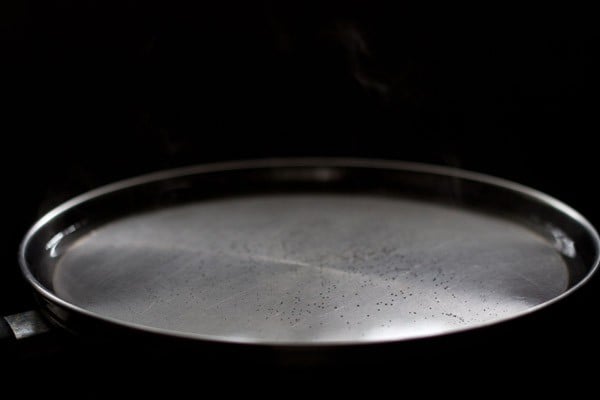
11. A couple of times, remove the lid carefully and stir. Cover and continue to cook till the peas are softened. If the water dries up in the rimmed lid, then add some more water.
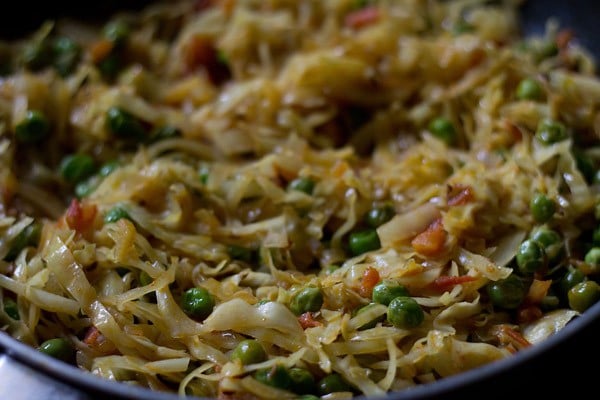
12. Once the peas are cooked, if there is any moisture in the pan, then simmer the veggies on a low flame till all the moisture is a bit dried up. I usually keep some moisture in the veggies.
Lastly add ½ teaspoon garam masala powder and chopped coriander leaves. Stir and mix well.

Serve cabbage matar hot with chapatis or phulkas or plain paratha or lachedar paratha. You can also serve it as a side with dal-rice or kadhi rice or with any North Indian meal.
It also tastes good with bread. You can make healthy sandwiches with this savory cabbage and peas stuffing. It can also be packed in the lunch box with some roti or paratha.
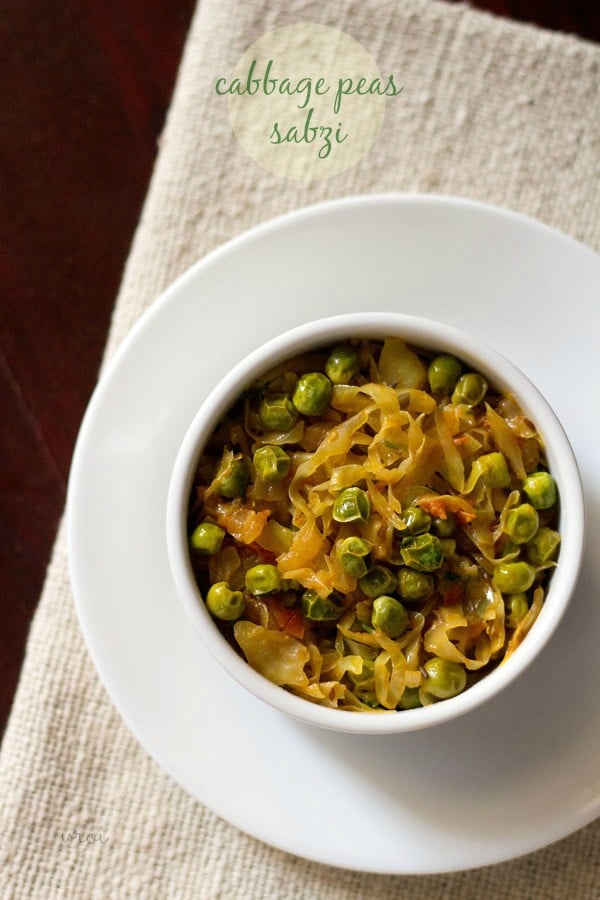
Few more tasty recipes
Please be sure to rate the recipe in the recipe card or leave a comment below if you have made it. For more vegetarian inspirations, Sign Up for my emails or follow me on Instagram, Youtube, Facebook, Pinterest or Twitter.
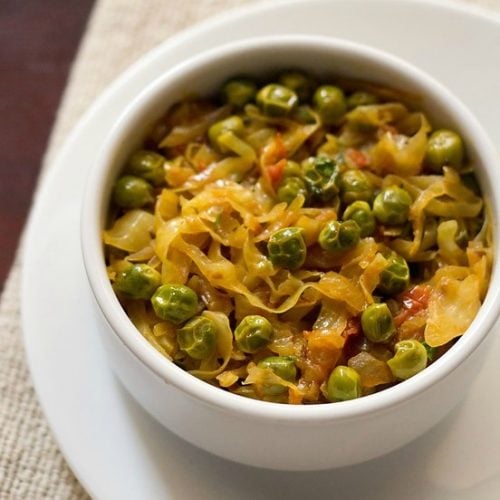
Patta Gobhi Matar | Cabbage Peas
Ingredients
- 200 grams cabbage (band gobhi or patta gobhi) or 4 cups of shredded cabbage
- ¾ to 1 cup of fresh peas (matar)
- 1 medium onion or ½ cup of finely chopped onion
- 1 medium to large tomato or ½ cup of finely chopped tomatoes
- ¼ teaspoon turmeric powder
- ½ teaspoon kashmiri red chilli powder
- ½ teaspoon Coriander Powder
- ½ teaspoon Garam Masala
- 1 teaspoon cumin seeds
- ¾ to 1 teaspoon Ginger Garlic Paste or ½ inch ginger and 2 to 3 cloves of garlic – crushed to a paste in a mortar-pestle
- 1.5 to 2 tablespoon oil
- salt as required
- few coriander leaves for garnishing
Instructions
- Rinse the cabbage first. Then shred the cabbage with a knife or in a food processor. You can also chop the cabbage.
- Rinse the peas and keep aside. Finely chop the onions and tomatoes.
making cabbage matar
- Heat oil in a frying pan or kadai without handles (wok). Splutter cumin first.
- Then add ginger-garlic paste. Stir and saute till their raw aroma goes away.
- Add chopped onions and saute till they become translucent.
- Add tomatoes. Stir and then add turmeric powder, red chilli powder and coriander powder.
- Stir and saute till you see oil releasing from sides of the mixture.
- Add the shredded or chopped cabbage/patta gobhi. Add green peas/matar.
- Stir very well and season with salt.
- Stir again and cover the pan with a rimmed lid filled with water. When using this method of cooking, you don’t need to add water to the veggies. Steam is formed in the pan and the veggies cook in the steam.
- A couple of times, remove the lid carefully and stir.
- Cover and continue to cook till the peas are softened. If the water dries up in the rimmed lid, then add some more water.
- Once the peas are cooked, if there is any moisture in the pan, then simmer the veggies on a low flame till all the moisture is a bit dried up. I usually keep some moisture in the veggies. Lastly add garam masala powder and chopped coriander leaves. Mix well.
- Serve cabbage matar with chapatis or phulkas. It also tastes good with bread.
Nutrition Info (Approximate Values)
This Patta Gobhi Matar post from the blog archives first published in September 2014 has been updated and republished on December 2022.
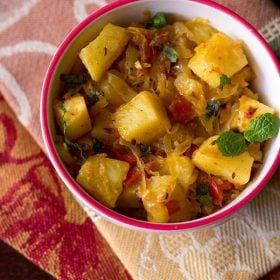
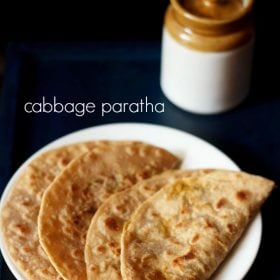
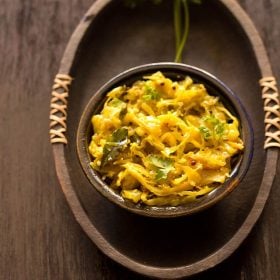
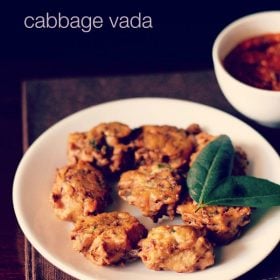







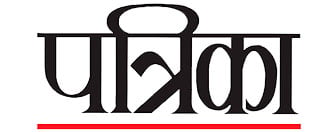
Made this today for the first time, delicious ! 😍 Between this and your excellent lauki recipe, I have no excuse to skip veggies 🥶 Thx !
Great and thanks for letting me know.
U didn’t blanch the cabbage in this recipe . Without blanching will it kill the worm in the cabbage
shruti, if you see black spots or worms on cabbage, while chopping then discard that part. when eating raw cabbage blanching is necessary. when cooking cabbage, blanching is optional. cooking does kill the worms.
Hi dassana,
In some sabzis, the instruction is to saute onion till it’s translucent while in some it’s till golden brown. How is this decided?
depends on the dish, ruchi. usually for most mughlai recipes, onions are cooked till golden. whereas for some punjabi or other north indian recipes, onions are cooked till translucent. if onions are cooked till golden, then it gives a different taste in the dish.